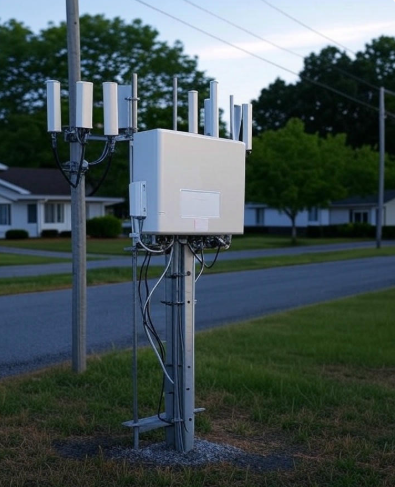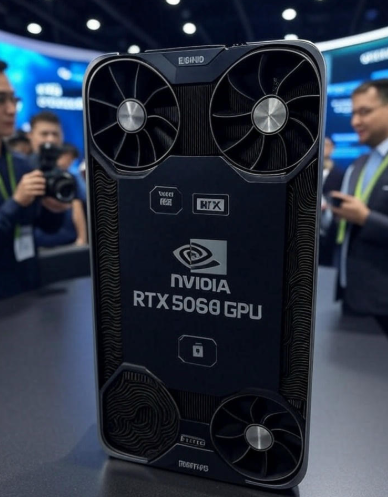Remember when we thought regular 5G was fast? Well, buckle up because 5G-Advanced (also called 5.5G) is here, and it’s making our current “lightning-fast” connections look like dial-up internet from the early 2000s. While most of the world is still catching up with basic 5G, Finland and China are already sprinting ahead with speeds that will make your jaw drop.
What Exactly is 5G-Advanced?
Before we dive into the mind-blowing speeds, let’s clear up what 5G-Advanced actually means. Think of it as 5G’s older, smarter, and much faster sibling. While regular 5G promised speeds of up to 1-2 Gbps (which, let’s be honest, most of us never actually see), 5G-Advanced cranks things up to a whole new level.
The technology builds on the foundation of existing 5G networks but adds several game-changing improvements:
- Massive speed boosts: We’re talking 10 Gbps and beyond
- AI-powered network optimization: Your network literally gets smarter over time
- Ultra-low latency: Response times measured in single-digit milliseconds
- Better energy efficiency: More performance while using less power
- Enhanced coverage: Stronger signals that reach further
It’s like comparing a regular sports car to a Formula 1 race car they’re both fast, but one is in a completely different league.
China Goes All-In with a $3 Billion Bet
China isn’t just testing 5G-Advanced; they’re betting the farm on it. China Mobile leads the way on 5G-Advanced with a $1.4 billion upgrade plan this year, and that’s just one company. The country is planning something that sounds almost impossible: China plans to construct over 4.5 million 5G base stations in 2025.
To put that number in perspective, that’s more than 12,000 new base stations every single day of the year. It’s like building a small city’s worth of telecom infrastructure daily.
Li Qiang, head of the big telco’s planning and construction department, told MWC last week the Chinese giant will roll out the technology in 300 cities this year and aims to fully deploy by 2026. That’s not just ambitious – it’s borderline crazy in the best possible way.
The scale of China’s commitment becomes even clearer when you realize that currently, 26 telcos in 15 countries are investing in 5G-A, and of those only six are making serious commitments. China is essentially saying, “While everyone else is thinking about it, we’re doing it.”

Finland’s Nordic Innovation Story
Meanwhile, in the snowy landscapes of Finland, Nokia and its partners are quietly breaking speed records that would make even the most sophisticated gamers weep with joy. Nokia, Elisa and Qualcomm Technologies, Inc. today announced that they have achieved the world’s fastest 5G speeds on a commercial network in Finland by delivering 8 Gbps for the first time serving two 5G mmWave devices connected simultaneously.
But here’s what makes Finland special – they’re not just achieving these speeds in controlled lab environments. Nokia today announced it has achieved sustained average downlink speeds of over 2 Gigabits per second (Gbps) using millimeter wave (mmWave) over real distances that matter to real people.
Think about what 8 Gbps actually means in real-world terms:
- Download a full 4K movie in under 10 seconds
- Upload massive files to the cloud instantly
- Stream multiple 8K videos simultaneously without any buffering
- Run cloud-based applications as if they were installed locally on your device
Finland’s approach is particularly interesting because they’re focusing on practical applications rather than just impressive numbers. Combined speeds from two devices hit 8 Gbps on a commercial 5G network on mmWave spectrum, showing support for low-latency, high-bandwidth services such as high-speed video downloads and VR/AR.
The AI Revolution Within the Network
Here’s where things get really interesting – and a bit scary in a sci-fi movie kind of way. 5G-Advanced isn’t just about raw speed; it’s about networks that can think and optimize themselves.
He said the company hopes the integration of 5G-Advanced with cloud and AI will create new services that we haven’t even imagined yet. We’re talking about networks that can:
- Predict when you’re about to need more bandwidth and allocate it automatically
- Optimize signal strength based on your movement patterns
- Reduce energy consumption by intelligently managing network resources
- Detect and prevent network congestion before it happens
- Customize network performance for specific applications in real-time
Imagine your phone’s network connection getting better over time, learning your habits and optimizing itself to give you the best possible experience. That’s not science fiction anymore – it’s happening right now.
The Technical Magic Behind the Speed
So how exactly are they achieving these insane speeds? The secret sauce involves several cutting-edge technologies working together:
Millimeter Wave (mmWave) Technology: This uses extremely high-frequency radio waves that can carry massive amounts of data. The trade-off is that these signals don’t travel as far, which is why we need more base stations.
Massive MIMO: Think of this as having hundreds of tiny antennas working together instead of just one big one. It’s like having a symphony orchestra instead of a solo performer.
Carrier Aggregation: This combines multiple frequency bands to create wider “highways” for data to travel. More lanes mean more traffic can flow simultaneously.
Advanced Beamforming: The network can actually aim signals directly at your device, like having a spotlight follow you around instead of lighting up the entire room.
Real-World Applications That Will Blow Your Mind
These speeds aren’t just impressive numbers for tech nerds to argue about online. They’re enabling applications that seemed impossible just a few years ago:
Extended Reality (XR) Everywhere: With 10 Gbps speeds and ultra-low latency, you could have fully immersive AR/VR experiences anywhere. Imagine trying on clothes in a virtual fitting room with perfect realism, or having holographic video calls that feel like the person is actually in the room with you.
Autonomous Everything: Self-driving cars need to communicate with each other and with traffic infrastructure in real-time. 5G-Advanced provides the backbone for truly autonomous transportation systems.
Remote Surgery and Telemedicine: Surgeons could perform operations remotely with haptic feedback so precise it feels like they’re actually holding the instruments. The low latency means there’s no dangerous delay between the surgeon’s movements and the robotic tools.
Smart Cities That Actually Work: Traffic lights that communicate with cars, buildings that optimize energy usage in real-time, and emergency services that can respond with superhuman efficiency.
The Challenges Nobody Talks About
Of course, it’s not all sunshine and 10 Gbps downloads. Rolling out 5G-Advanced comes with some serious challenges:
Infrastructure Costs: Building all those base stations is expensive. Really expensive. In the wake of the 5G capex spree, it’s no surprise mobile operators have been cautious in their embrace of 5G-Advanced.
Energy Consumption: All that speed and AI processing requires significant power. Network operators are working on making 5G-Advanced more energy-efficient, but it’s still a major concern.
Security Concerns: More connected devices and AI-powered networks create more potential attack vectors for cybercriminals and hostile nations.
Digital Divide: As some countries race ahead with 5G-Advanced, others are still struggling with basic 4G coverage. This could create an even larger gap between technological haves and have-nots.
What This Means for Regular People
You might be thinking, “This all sounds cool, but what does it actually mean for me?” Fair question. Here’s the reality:
In the short term (next 1-2 years), you probably won’t see dramatic changes in your daily life. Your current phone likely can’t even take advantage of 5G-Advanced speeds, and the networks are still being built out.
But in the medium term (3-5 years), the changes could be revolutionary:
- Your phone will become a gateway to cloud-based computing power that makes today’s laptops look primitive
- Video calls will be so high-quality and low-latency that remote work becomes indistinguishable from being in person
- Gaming will move entirely to the cloud, with graphics processing happening on powerful servers and streamed to your device
- Your car will communicate with traffic infrastructure to optimize routes in real-time
The Global Race is Just Beginning
The full-scale rollout is expected to pick up through 2025 and 2026, making 5G Advanced a hot topic in the telecom world today. While Finland and China are leading the charge, other countries are starting to take notice.
The question is: who will be next? The United States is notably absent from the early adopters list, which could have significant implications for American competitiveness in the coming decade. European countries beyond Finland are also moving slowly, potentially ceding technological leadership to Asia.
Looking Ahead: The 6G Horizon
Believe it or not, researchers are already working on 6G technology, which promises speeds up to 100 times faster than 5G-Advanced. But let’s be honest – we can barely wrap our heads around 10 Gbps, so 1,000 Gbps (1 Tbps) is almost incomprehensible.
For now, 5G-Advanced represents the next major leap in wireless technology. Finland and China are showing us what’s possible when countries commit to technological leadership rather than just talking about it.
Insights
We’re witnessing the beginning of a new era in wireless technology. Dr. HC Hwang, General Manager, Wireless Communication System and Partnership, MediaTek, Inc., says, “We are thrilled to collaborate with Telstra and Ericsson in achieving this remarkable 10Gbps 5G download speed benchmark, and these achievements are just the tip of the iceberg.
The race between Finland and China to deploy 5G-Advanced isn’t just about bragging rights or impressive speed tests. It’s about positioning their countries at the forefront of the next wave of technological innovation. The applications enabled by 10 Gbps speeds and AI-powered networks will create entirely new industries and transform existing ones.
For the rest of us, the message is clear: the future is arriving faster than we expected, and it’s going to be more connected, more intelligent, and more amazing than we ever imagined. The only question is whether we’ll be ready for it.



